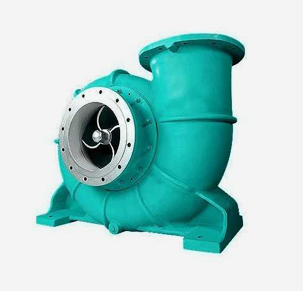English
- Afrikaans
- Albanian
- Amharic
- Arabic
- Armenian
- Azerbaijani
- Basque
- Belarusian
- Bengali
- Bosnian
- Bulgarian
- Catalan
- Cebuano
- Corsican
- Croatian
- Czech
- Danish
- Dutch
- English
- Esperanto
- Estonian
- Finnish
- French
- Frisian
- Galician
- Georgian
- German
- Greek
- Gujarati
- Haitian Creole
- hausa
- hawaiian
- Hebrew
- Hindi
- Miao
- Hungarian
- Icelandic
- igbo
- Indonesian
- irish
- Italian
- Japanese
- Javanese
- Kannada
- kazakh
- Khmer
- Rwandese
- Korean
- Kurdish
- Kyrgyz
- Lao
- Latin
- Latvian
- Lithuanian
- Luxembourgish
- Macedonian
- Malgashi
- Malay
- Malayalam
- Maltese
- Maori
- Marathi
- Mongolian
- Myanmar
- Nepali
- Norwegian
- Norwegian
- Occitan
- Pashto
- Persian
- Polish
- Portuguese
- Punjabi
- Romanian
- Russian
- Samoan
- Scottish Gaelic
- Serbian
- Sesotho
- Shona
- Sindhi
- Sinhala
- Slovak
- Slovenian
- Somali
- Spanish
- Sundanese
- Swahili
- Swedish
- Tagalog
- Tajik
- Tamil
- Tatar
- Telugu
- Thai
- Turkish
- Turkmen
- Ukrainian
- Urdu
- Uighur
- Uzbek
- Vietnamese
- Welsh
- Bantu
- Yiddish
- Yoruba
- Zulu
Telephone: +86 13120555503
Email: frank@cypump.com
Nov . 28, 2024 02:30 Back to list
Analysis and Design of Pumping Systems within Pipeline Infrastructure
Analysis and Design of Pump Pipeline Systems
In the realm of fluid transport, pump pipeline systems play a pivotal role in ensuring the efficient and reliable movement of liquids, gases, and slurries. The interplay between various components—pumps, pipes, valves, and control systems—requires a thorough analysis and design process to optimize performance and minimize operational costs. This article delves into the essential aspects of analyzing and designing pump pipeline systems, focusing on key considerations that influence their effectiveness and efficiency.
Understanding the System Requirements
The first step in the analysis and design of a pump pipeline system is to clearly define the system requirements. This involves understanding the nature of the fluid being transported, including its chemical properties, temperature, and viscosity. Additionally, it is crucial to determine the flow rate, pressure requirements, and elevation changes along the pipeline. This information forms the backbone of the design, guiding subsequent calculations and choices of equipment.
Selecting the Appropriate Pump
The selection of an appropriate pump is vital to the overall performance of the system. Different types of pumps—centrifugal, positive displacement, and submersible—offer distinct advantages based on the application's specific needs. For instance, centrifugal pumps are commonly used for low-viscosity fluids and high flow rates, while positive displacement pumps are more suitable for viscous fluids. Key factors to consider during pump selection include the pump's efficiency, the required net positive suction head (NPSH), and the pump's performance curves that illustrate its behavior across varying operating conditions.
Pipeline Design Considerations
pump pipeline system analysis and design

Once the pump has been selected, attention must turn to the design of the pipeline itself. The diameter, length, and material of the pipeline can significantly impact the system's efficiency. A larger diameter pipe reduces friction losses, facilitating better flow rates. However, it also incurs higher material costs. Conversely, smaller diameter pipes may increase resistance and lead to pressure drops, potentially causing pump cavitation. Therefore, a careful balance between cost, efficiency, and material longevity must be struck.
Pressure Drop and System Head Loss
Understanding pressure drop within the pipeline is crucial for ensuring that the system operates within intended parameters. Factors contributing to pressure drop include friction losses in the pipe, losses at fittings, and changes in elevation. These losses can be quantified using the Darcy-Weisbach equation or the Hazen-Williams equation for water systems. Designers must also account for dynamic head losses caused by flow changes and other operational conditions. The total dynamic head (TDH) is a critical parameter that reflects the energy required to move fluid through the system and must be matched with the pump's capabilities.
Control Systems and Automation
Modern pump pipeline systems often incorporate sophisticated control systems to enhance efficiency and reliability. Automation technologies, such as variable frequency drives (VFDs), allow for real-time monitoring and adjustments based on demand changes, leading to energy savings and reduced wear on equipment. Additionally, integrating sensors for flow, pressure, and temperature can facilitate proactive maintenance and detect anomalies before they escalate into costly failures.
Conclusion
In conclusion, the analysis and design of pump pipeline systems are complex processes that require a comprehensive understanding of fluid mechanics, equipment selection, and system dynamics. A successful design not only addresses the current requirements but also anticipates future demands and operational exceptions. By considering factors such as pump selection, pipeline design, pressure drop analysis, and automation, engineers can create efficient and resilient pump pipeline systems that stand the test of time. As industries continue to evolve, embracing innovative technologies and methodologies will be key to optimizing these essential systems, ensuring reliable fluid transport across various applications.
-
Horizontal Split Case Pump with GPT-4 Turbo | High Efficiency
NewsAug.01,2025
-
ISG Series Pipeline Pump - Chi Yuan Pumps | High Efficiency, Durable Design
NewsAug.01,2025
-
Advanced Flue Gas Desulfurization Pump with GPT-4 Turbo | Durable & Efficient
NewsJul.31,2025
-
ISG Series Vertical Pipeline Pump - Chi Yuan Pumps | Advanced Hydraulic Design&Durable Construction
NewsJul.31,2025
-
ISG Series Vertical Pipeline Pump - Chi Yuan Pumps | Energy Efficient & Low Noise
NewsJul.31,2025
-
pipeline pump - Chi Yuan Pumps Co., LTD.|High Efficiency&Low Noise
NewsJul.31,2025










